Growing Rosemary in a Greenhouse: From a Fragrant Dream to an Evergreen Oasis
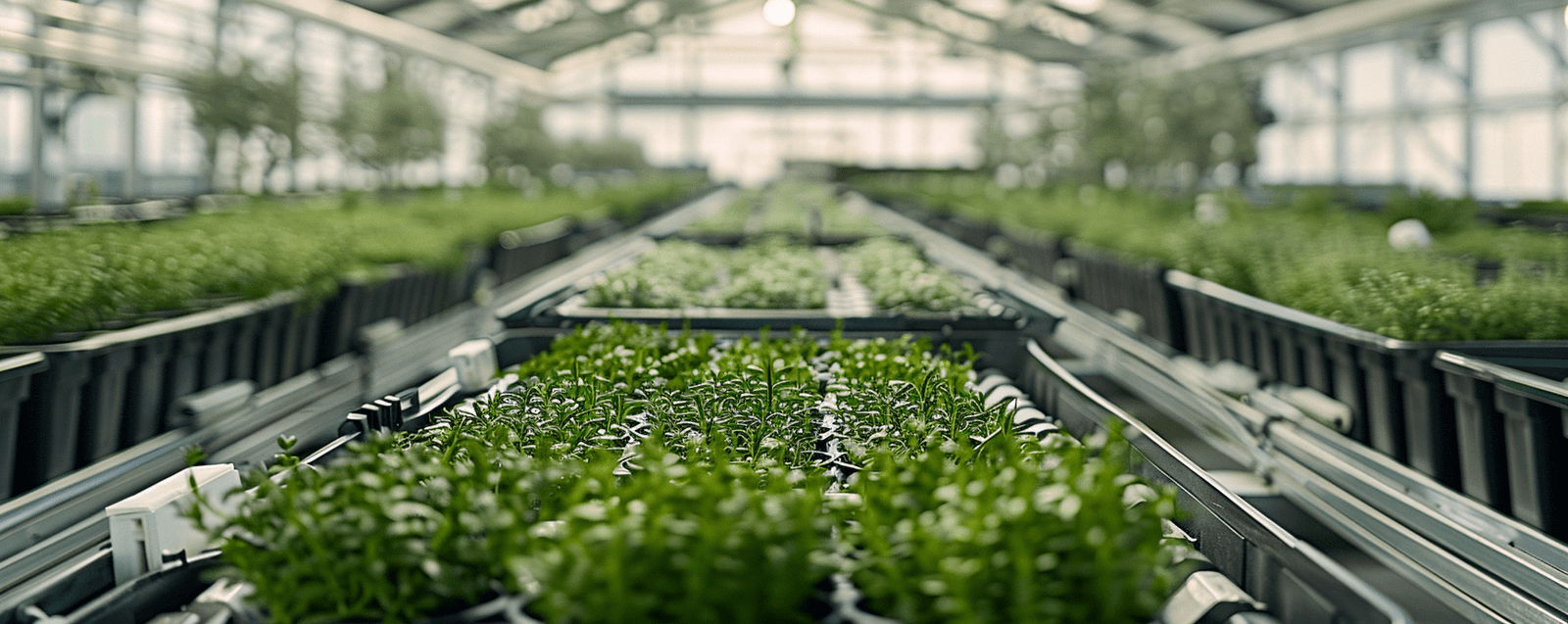
Imagine: it's cold and gray outside, and in your greenhouse, you've got a little corner of the Mediterranean, fragrant with the spicy, resinous aroma of rosemary. Dreaming of fresh sprigs for culinary masterpieces or home herbal remedies year-round, but your region's climate doesn't allow this evergreen shrub to overwinter outdoors? Tired of store-bought rosemary quickly losing its scent or not lasting at all? The greenhouse can become Your secret weapon in growing this amazing plant, allowing you not only to protect it from the vagaries of the weather but also to create ideal conditions for its lush growth and rich aroma. Let's dive into the world of greenhouse rosemary cultivation and learn how to turn your fragrant dream into reality.
Benefits of Growing Rosemary in a Greenhouse
Growing this heat-loving Mediterranean guest in protected soil conditions offers many advantages:
- Year-round access to fresh greens: In a heated greenhouse, you can cut fragrant sprigs of rosemary even in winter.
- Protection from adverse climatic conditions: Rosemary is frost-sensitive. A greenhouse will protect it from freezing in regions with cold winters. It will also protect it from excessive rainfall, hail, and strong winds.
- Extension of the growing season: In a greenhouse, you can start vegetation earlier and finish it later, which is especially important for obtaining cuttings or growing young plants.
- Control of growing conditions: It is easier to maintain optimal temperature, soil and air humidity, as well as lighting levels.
- Improving plant quality: With proper care, greenhouse rosemary can be more lush, fragrant and healthy.
- Possibility of growing in containers: In a greenhouse, it is convenient to grow rosemary in pots or containers, which makes it easy to move the plants if necessary or bring them into a warmer room for the winter if the greenhouse is unheated.
- Reducing the risk of certain diseases and pests: An isolated space helps control the spread of pathogens.
Choosing a Rosemary Variety for a Greenhouse
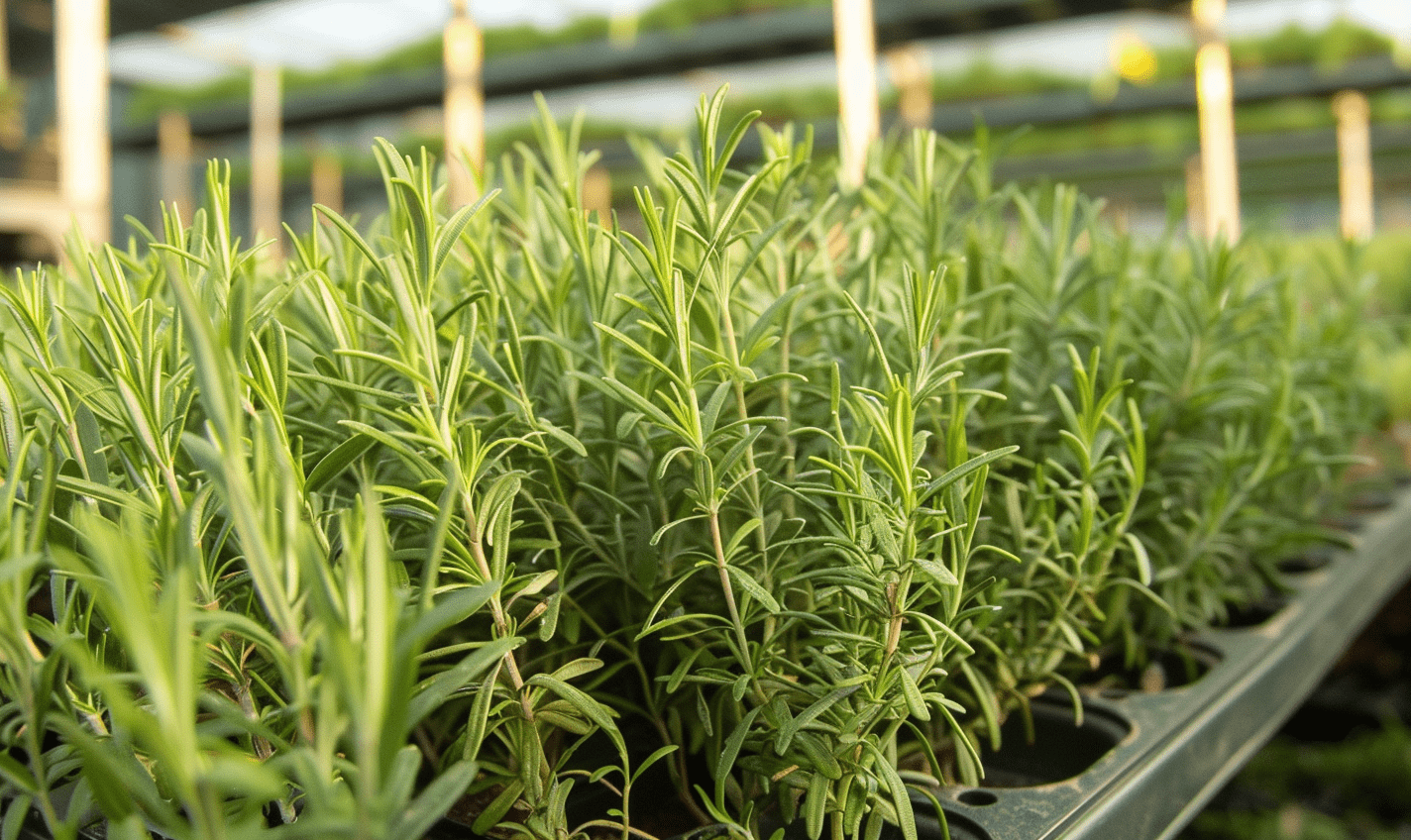
There are many varieties of rosemary (Rosmarinus officinalis), varying in vigor, bush shape, flower color, and fragrance intensity. Almost any variety is suitable for greenhouse use, but it's worth paying attention to the following characteristics:
- Compactness: For limited greenhouse space, more compact or creeping varieties may be preferable if large bushes are not planned.
- Frost resistance (relative): Although a greenhouse provides protection from severe frosts, some varieties are more resistant to low temperatures, which can be important for unheated or poorly heated structures.
- Aroma intensity and essential oil content: If rosemary is grown for culinary or medicinal purposes, choose varieties with a strong aroma.
Popular varieties of rosemary:
- 'Rosemary' (Rosmarinus officinalis): A classic species from which many cultivars have descended. The bush is upright, reaching 1-1.5 m in height.
- 'Arp' (Arp): One of the most frost-resistant varieties, leaves are grey-green.
- 'Tuscan Blue': An upright variety with dark green leaves and bright blue flowers. Very fragrant.
- Miss Jessopp's Upright: Upright, vigorous variety.
- 'Prostratus' or 'Creeping': A low-growing variety with creeping shoots, it is ideal for hanging pots or as a groundcover plant in larger containers.
- 'Roseus': It is distinguished by its pink flowers.
- 'Albus': A variety with white flowers.
Where to buy planting material?
- Seeds: It is possible to grow from seeds, but this is a longer process, and the germination rate of rosemary seeds is often low.
- Cuttings or seedlings: Preferred option: Purchase rooted cuttings or young potted plants from specialist nurseries or garden centres. Make sure the plants are healthy and free of disease or pests.
Preparing the greenhouse and soil
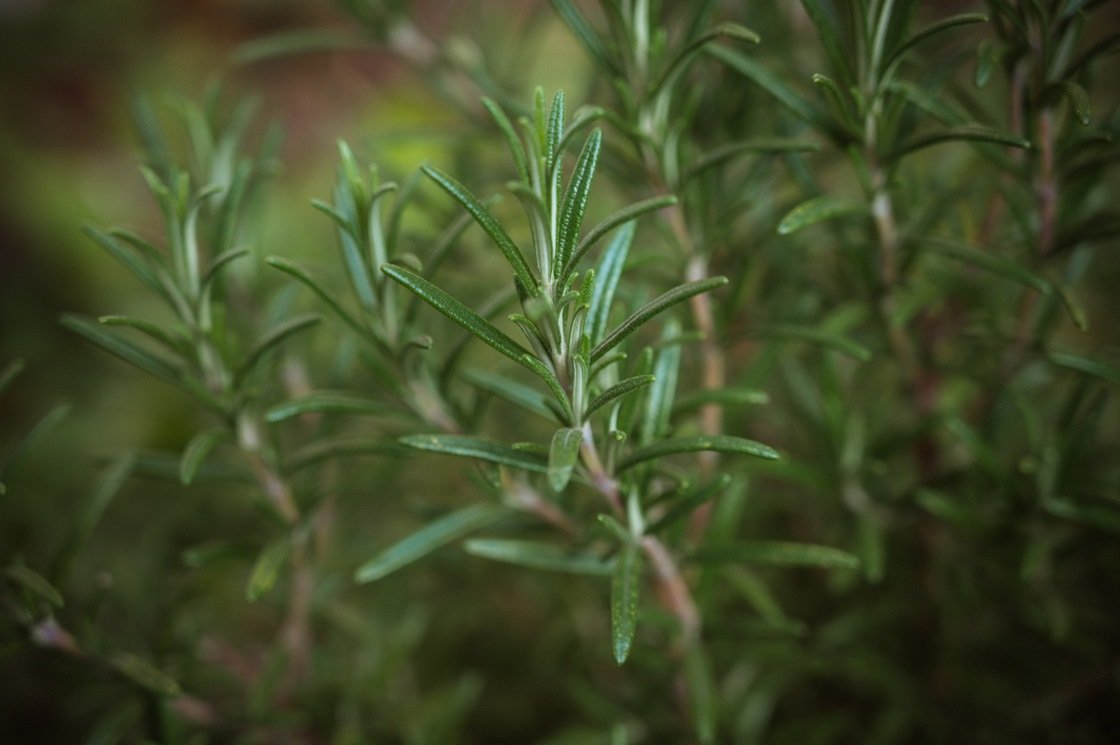
When to start preparing?
2-4 weeks before the planned planting.
Soil requirements for rosemary:
Rosemary prefers light, well-drained, calcareous or neutral soils. It does not tolerate stagnant water or acidic soils.
- Soil type: Sandy loam, stony or light loamy soils are ideal.
- Acidity (pH): 6.0-7.5 (neutral or slightly alkaline). If the soil is acidic, liming is necessary (dolomite flour, lime).
- Drainage: Excellent drainage is key. When planting in containers, be sure to place a thick layer of drainage material (expanded clay, gravel, or broken brick) on the bottom.
Stages of soil preparation in a greenhouse (when planting in the greenhouse ground):
- Cleaning the greenhouse: Remove weeds and plant debris. Disinfect the structures.
- Digging the soil: Digging depth: 20-30 cm.
- Improving soil structure:
- If the soil is heavy and clayey, add coarse sand, fine gravel, perlite, or vermiculite to improve drainage and aeration.
- Add a small amount of well-rotted compost or humus (2-3 kg/m²). Rosemary doesn't require very fertile soil; too much organic matter can be harmful.
- Liming (if necessary): If soil pH is below 6.0, apply dolomite or lime according to package directions.
- Formation of beds or planting sites: Raised beds can be made for better drainage.
Preparing containers (for container growing):
- Choose pots or containers with large drainage holes.
- Place a drainage layer on the bottom (at least 1/4 of the pot’s height).
- Prepare the substrate: mix general-purpose potting soil or garden soil with sand (or perlite) in a 2:1 or 1:1 ratio. You can add a little compost. The main thing is that the substrate is loose and well-drained.
Optimal greenhouse conditions for rosemary:
- Temperature:
- Optimal for growth: +18-25°C.
- Winter (for overwintering in an unheated or poorly heated greenhouse): +5-10°C. Rosemary can withstand short-term drops to -5°C (some varieties can withstand temperatures as low as -10-12°C), but only if the soil is dry. Prolonged frosts are harmful.
- Lighting: Rosemary is a very light-loving plant. It requires at least 6-8 hours of direct sunlight per day. In a greenhouse, ensure maximum light access. During the fall and winter, supplemental lighting with phytolamps may be necessary.
- Ventilation: Rosemary loves fresh air and doesn't tolerate stagnant moisture. Regular ventilation of the greenhouse is essential, especially after watering.
Planting rosemary in a greenhouse
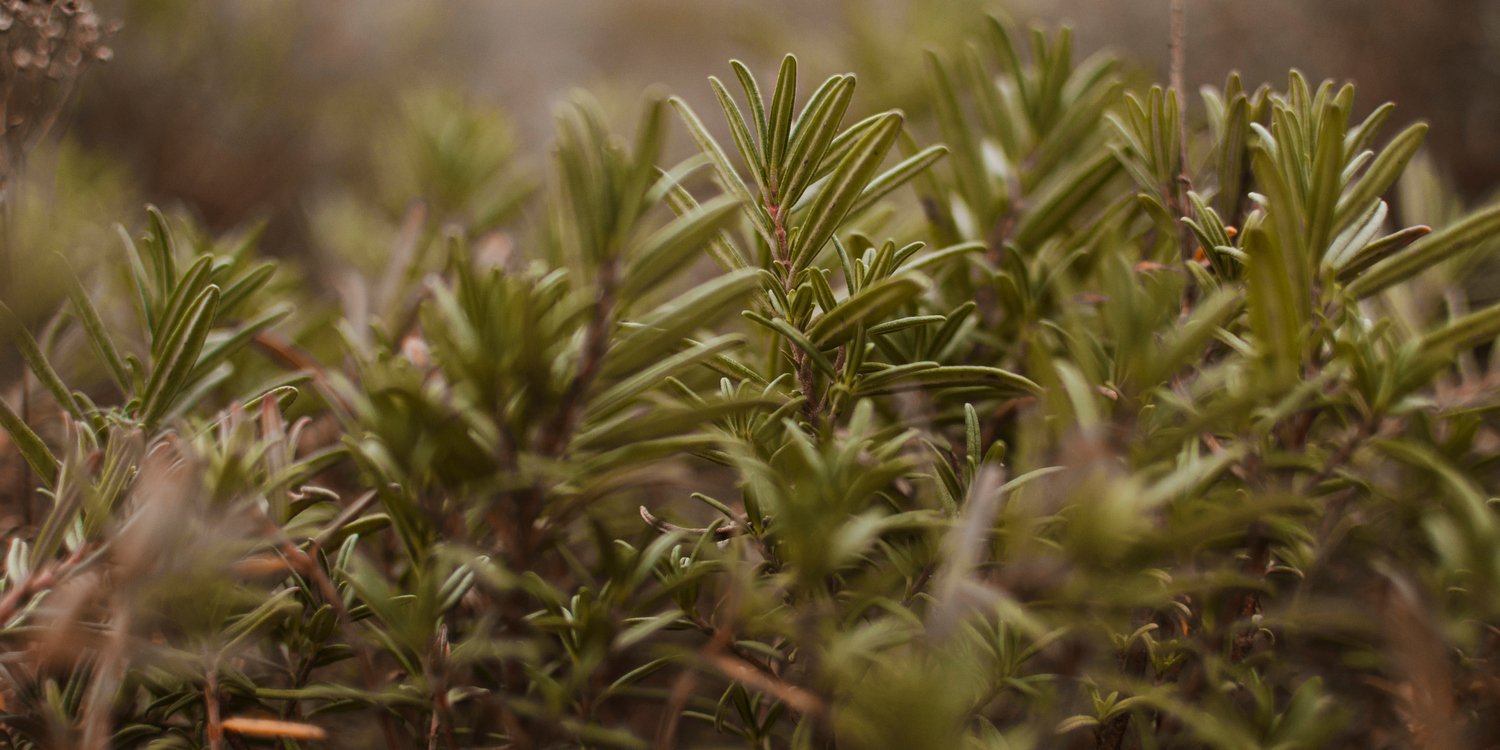
- Growing from seeds:
- Sowing time: February-March for seedlings.
- Seed preparation: Rosemary seeds are slow to germinate. To improve germination, soak them for several hours in warm water or a growth stimulant solution.
- Sowing: Sow in pots or trays with loose, sterile soil to a depth of 0.3-0.5 cm. Lightly cover with soil and moisten with a spray bottle. Cover with plastic wrap or glass to create a greenhouse effect.
- Germination: Seeds take a long time to germinate, from 2-3 weeks to 1-2 months, at a temperature of 20-25°C. Regularly ventilate and moisten the crops.
- Pricking out: When the seedlings have 2-3 pairs of true leaves, they are transplanted into separate pots.
- Landing at a permanent location: The seedlings are planted in a greenhouse (in the ground or large containers) when they are strong enough and the threat of severe cold weather has passed (if the greenhouse is unheated).
- Cuttings:
This is the simplest and most effective way to propagate rosemary.
- Timing of cuttings: Spring (April-May) or late summer (August-September).
- Cuttings: The apical or lateral semi-woody shoots, 8-10 cm long, are cut off. The lower leaves are removed.
- Rooting:
- In water: Place the cuttings in a glass of water (you can add an activated charcoal tablet). Roots will appear in 3-6 weeks.
- In the substrate: Cuttings are planted in a loose substrate (a mixture of peat and sand, or perlite) to a depth of 2-3 cm. Cover with plastic wrap or a jar to maintain humidity. Regular ventilation and moisture are maintained. Rooting occurs at a temperature of 18-22°C.
- Planting rooted cuttings: After a good root system has formed, the cuttings are planted in a permanent location.
- Planting seedlings (purchased or grown):
- Planting times: Spring (after the threat of frost has passed in an unheated greenhouse) or fall (3-4 weeks before the expected frost, to allow the plant time to establish roots). In a heated greenhouse, planting can be done almost any time.
- Planting technique:
- Prepare planting holes or containers. The hole should be slightly larger than the seedling's root ball.
- Carefully remove the seedling from the pot. If the roots are very tangled, you can straighten them out a bit.
- Place the seedling in the hole so that the root collar is at soil level.
- Fill the hole with prepared soil, compacting it lightly around the roots.
- Water generously.
- Mulch the soil around the plant with a thin layer of gravel, expanded clay, or bark (this will help retain moisture and prevent weed growth, but do not allow the mulch to come into contact with the trunk).
- Distance when planting in greenhouse soil: Leave 50-100 cm between plants, depending on the expected size of the adult bush.
Caring for rosemary in a greenhouse
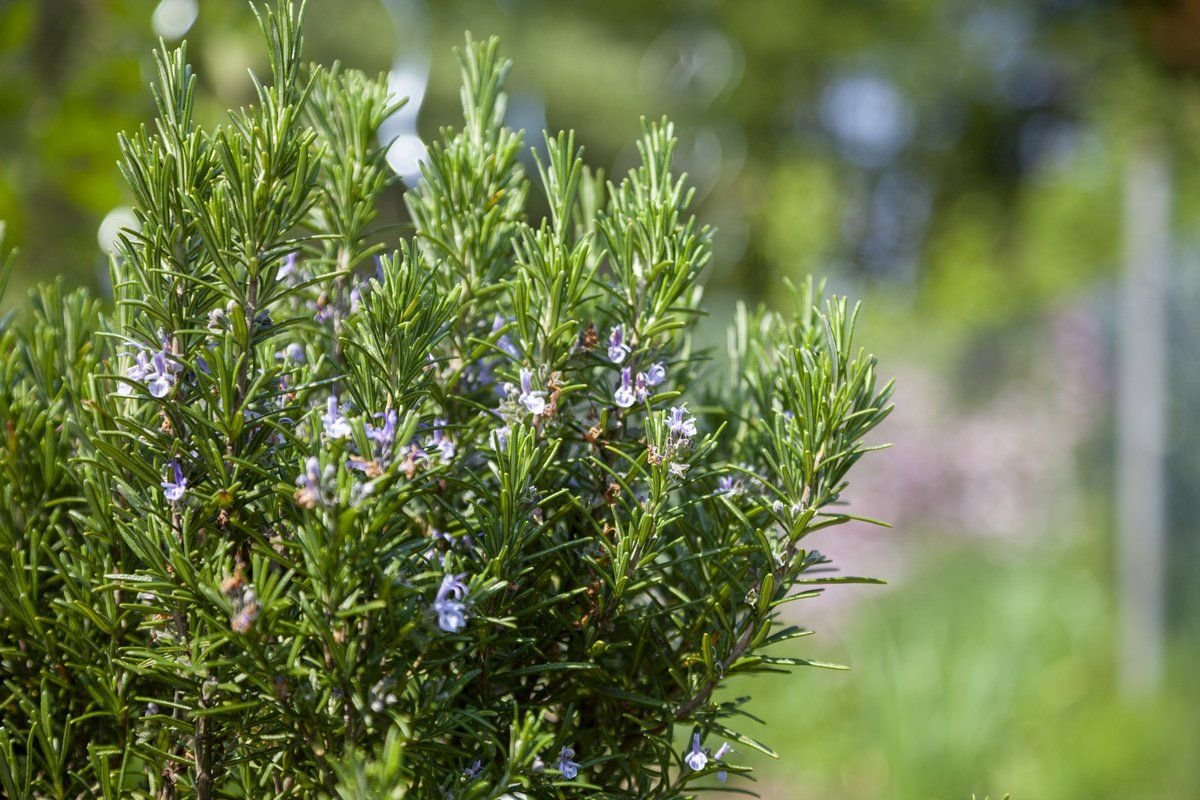
- Watering:
- Rosemary is drought-resistant and does not tolerate overwatering.
- Basic rule: Water moderately, allowing the soil to dry out thoroughly between waterings to a depth of 3-5 cm.
- Watering frequency depends on temperature, humidity, light, and plant size. In hot summer weather, water more frequently; in winter, water less frequently (especially if the plant is overwintered in a cool greenhouse).
- Use settled water at room temperature.
- Avoid getting water on the leaves when watering to prevent fungal diseases. Water at the roots.
- Air humidity:
- Rosemary prefers dry to moderately humid air. High humidity combined with poor ventilation can lead to the development of fungal diseases.
- Ventilate the greenhouse regularly.
- Fertilizer (top dressing):
- Rosemary doesn't require frequent or abundant fertilization. Excess nutrients can diminish its aroma.
- In spring (at the beginning of active growth): You can feed with a complex mineral fertilizer with a low nitrogen content or organic fertilizer (for example, a well-diluted mullein infusion 1:10 or compost tea) once.
- During the summer, you can carry out 1-2 more feedings if the plant looks weakened.
- Avoid fertilizing in the second half of summer and in autumn to avoid stimulating new growth before winter.
- Pruning and shaping the bush:
- Pruning stimulates branching, makes the bush more luxuriant and helps maintain the desired shape.
- Sanitary pruning: In spring, remove all dry, damaged or frozen branches.
- Formative pruning: Perform after flowering or throughout the summer. Shorten shoots by 1/3 or 1/2 their length. Avoid pruning too hard, leaving the woody part bare of green leaves, as old wood is poor at producing new shoots.
- Regular cutting of young branches for culinary purposes also helps to form the bush.
- In autumn, severe pruning is not carried out.
- Preparing for winter (for unheated or poorly heated greenhouses):
- Reduce watering: In the fall, gradually reduce watering. The soil should be almost dry before winter.
- Covering (if necessary): If severe frosts are expected that the greenhouse cannot withstand, container plants can be additionally insulated (by wrapping the pot in burlap or agrofibre) or moved to a cooler, but frost-free, room (+5-10°C). Plants in the greenhouse ground can be covered with spruce branches or agrofibre.
- It is important to ensure good ventilation in winter to avoid damping off.
Disease and pest control
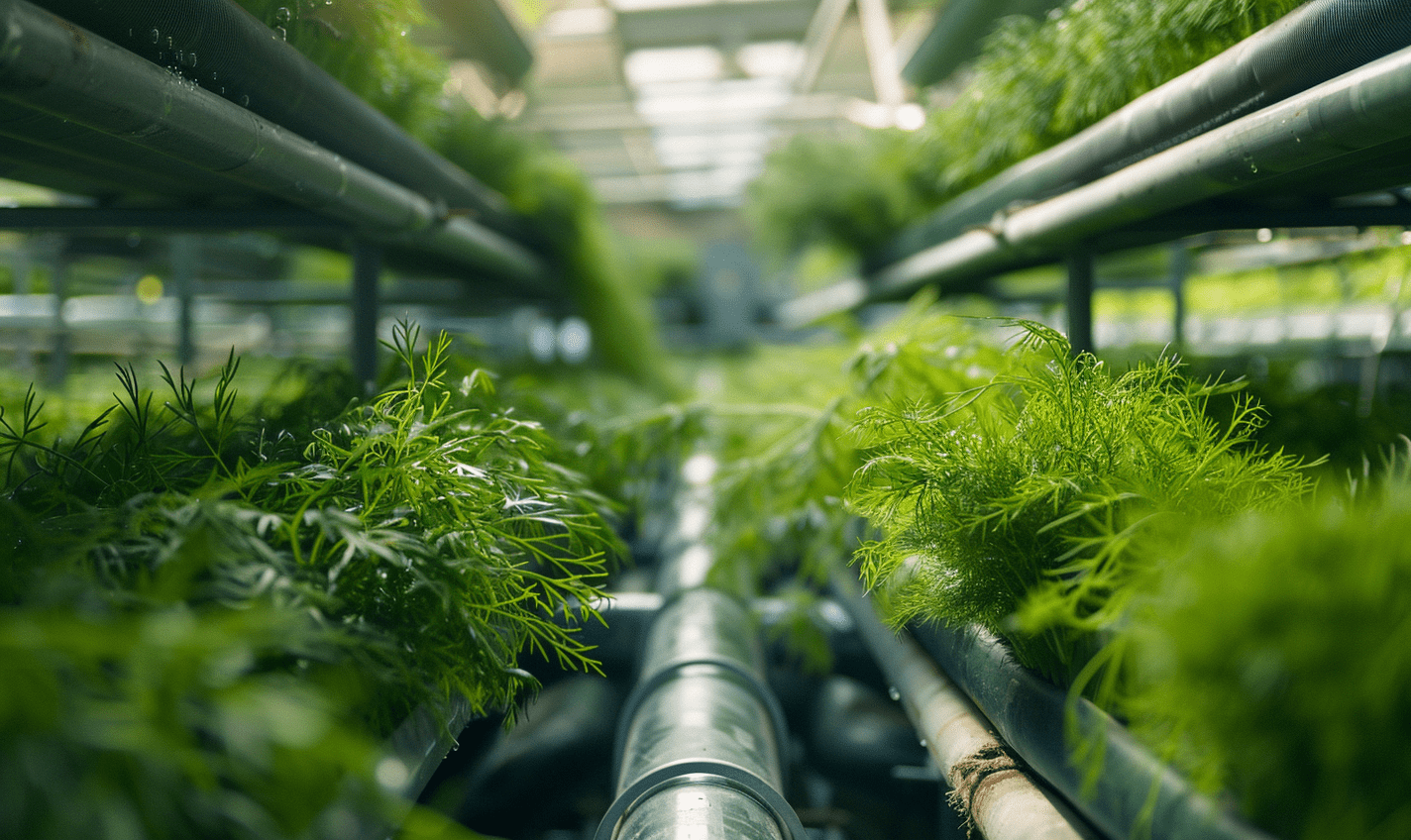
Rosemary is quite resistant to diseases and pests, especially with proper care and good ventilation.
Possible pests:
- Spider mite: It appears in dry, hot air. A thin webbing appears on the leaves, which then turn yellow and fall off.
- Control measures: Increasing air humidity (spraying the area around the plants with water, but not the plants themselves if there is a risk of fungus), treatment with acaricides (Fitoverm, Actellic).
- Aphid: Rarely, but it can affect young shoots.
- Control measures: Rinse with water, spray with soapy water or infusions of insecticidal plants (garlic, tobacco).
- Greenhouse whitefly: If there are other crops in the greenhouse, it can spread to rosemary.
- Control measures: Glue traps, insecticides.
Possible diseases:
- Powdery mildew: A white, powdery coating on leaves and stems. Develops in high humidity and poor ventilation.
- Control measures: Improve ventilation. Remove diseased parts. Treat with fungicides (Topaz, Skor) or biopreparations (Fitosporin-M).
- Root rot: They occur due to overwatering and poor drainage. The roots darken and rot, and the plant wilts.
- Control measures: Immediately stop watering. Repot the plant in fresh, dry, well-drained soil, removing all rotted roots and treating the cut surfaces with a fungicide. From then on, strictly adhere to the watering schedule.
Preventive measures:
- Ensure good drainage and loose soil.
- Moderate watering.
- Regular ventilation of the greenhouse.
- Avoiding dense plantings.
- Use of healthy planting material.
- Timely removal of dry and damaged parts of the plant.
Harvesting and storage
- When to collect: Young rosemary sprigs can be pruned as needed throughout the growing season. The most fragrant shoots are those just before or during flowering.
- How to assemble: Use a sharp knife or scissors to prune off the top 5-15 cm of shoots. Avoid cutting more than 1/3 of the bush at a time.
- Drying:
- Tie the twigs into small bundles and hang them in a dry, dark, well-ventilated place.
- You can lay the twigs in a thin layer on paper or fabric.
- Dried rosemary is stored in airtight glass jars in a dark place. It retains its aroma for up to a year.
- Freezing: Fresh sprigs can be frozen. Wash them, dry them, spread them out on a tray in a single layer, freeze them, and then transfer them to freezer bags or containers.
- Storing in oil or vinegar: Fresh rosemary sprigs can be used to flavor olive oil or vinegar.
Conclusion: Your fragrant corner of the Mediterranean in a greenhouse

Growing rosemary in a greenhouse Rosemary isn't just a way to access fresh herbs year-round; it's an opportunity to create a little corner of the sunny Mediterranean, filled with a unique aroma and comfort. We've covered every step of this exciting process in detail: from choosing the right variety that will delight you with its aroma and beauty, to creating optimal conditions in the greenhouse—with the right soil, sufficient light, and good ventilation—to the nuances of planting, whether from seeds, cuttings, or established seedlings. We've also delved into the secrets of care, including proper watering, moderate fertilizing, and formative pruning, which will help your rosemary grow lush and healthy.
Equally important is knowledge of how to prevent and combat potential diseases and pests, as well as the rules for harvesting and storing crops to preserve their valuable properties and flavor. A greenhouse, as we've seen, provides ideal conditions for this heat-loving plant, protecting it from the vagaries of the weather and allowing you to control all aspects of its growth.
Let your greenhouse rosemary become not only a source of culinary inspiration and beneficial phytoncides, but also a symbol of your gardening prowess. With a little care and attention to the needs of this amazing plant, it will generously reward you with its unique aroma and evergreen beauty for years to come.





